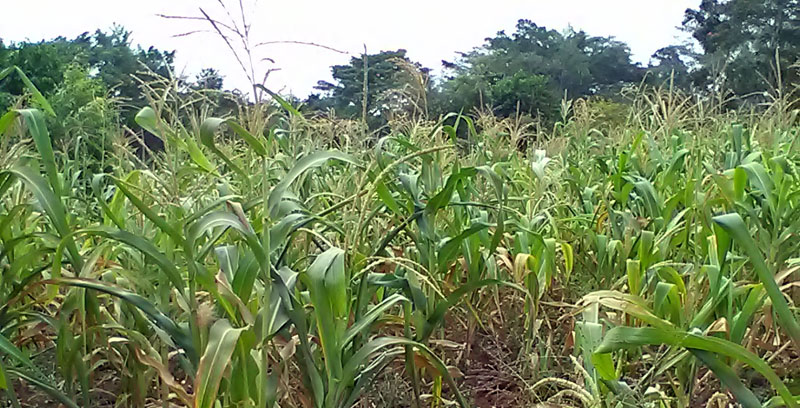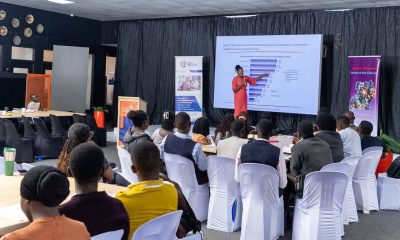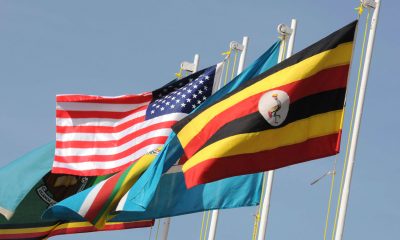Analysis
Planning for weak rains, Choice of seeds is critical
The latest seasonal forecast released by the Uganda National Meteorological Authority (UNMA) has revealed that millions of people face a stressful period over the next few months because of the possibility of receiving less than normal rains.
The UNMA said: “The Seasonal climate forecast for September to December 2016 indicates that there is an increased likelihood of near normal to below normal rainfall over several regions of the country. This implies that most regions of the country are expected to receive the total rainfall that is below 75% of the long term average.”
UNMA further noted that with these rainfall totals, there are high chances of social-economic activities being interupted.
News of the anticipated low rains is bad news already for millions of farmers across the country who have just come out of another bad season because of poor rains. With Uganda’s agriculture being predominantly rain-fed, delayed or insufficient rains will have serious adverse effects on food security, incomes of millions of people as well as the overall economy of Uganda.
And this comes after yet another disappointing season that devastated farmers due to poor rains. The prolonged dry spell destroyed cereal crops especially maize as well as legumes such as beans, ground-nuts, and peas.
There is evidence that most farmers have already started to suffer the consequences of the adverse weather disruptions in the new season. In many parts of greater Masaka, that includes districts such as Ssembabule, Lwengo, Gomba, Butambala as well as greater Ankole, farmers who planted in anticipation of the rain have witnessed poor germination.
Ntege Dennis, a smallholder farmer in Kifampa, Gomba district revealed to The Sunrise that he planted on the first rains but because the rains were weak, nearly half of the seed failed to germinate.
“We planted in dust hopping that the moment it rains, the beans will just germinate. But we have lost most of the seed because the rains were weak.”
For many farmers who waited for the start of the proper rains, the task ahead is not any simpler. To avoid total loss, farmers will have to be smarter in order to withstand the harsh irregular rains.
Drought tolerant and drought escape maize
Many Ugandans have historically preferred to keep seed from previous harvest for planting in successive seasons. But this is rapidly changing.
The hostile dry spell that scotched most maize farmers last season burned the fingers of most traditional farmers who depended on traditional seed preservation methods.
The increasing frequency of harsh weather conditions such as droughts and erratic rains as well as the need to increase productivity are forcing farmers to go for improved seed as the first critical step for achieving higher yields but also as a way to minimize exposure to other environmental hazards such as droughts, diseases and pests.
News of a pending drought has, according to media reports triggered a mad rush among farmers to seek improved seed for planting in the next season.
Research by Ugandan scientists offers hope for farmers in the face of dry conditions
The National Agricultural Research Organisation (NARO) working with the Water Efficient Maize for Africa (WEMA) project recently released a new drought tolerant maize variety named Drought Tego or Drought Shield.
Released only in July this year, Farmers have snapped up nearly all the DroughtTego seeds in supply.
According to Peter Wamboga Mugirya, the Head of Communications at the Science Livelihoods and Development Scifode, only one of the eight companies that were licensed to multiply Drought Tego drought tolerant maize, still had seed. The rest of the companies have witnessed seed stock-outs partly due to high demand but also due to last season’s prolonged drought that affected seed production.
According to scientists, DroughtTego, a hybrid maize variety can yield up to 3 tones per acre in moderate dry conditions and 8 tones under good rainfall conditions.
But farmers need not whine about the stock-out of Tego. According to Dr. Godfrey Asea, the Heaad of NaCRRI (Namulonge) there are other maize varieties that perform well under moderately dry conditions.
He told The Sunrise that the following maize varieties (most of them hybrids) perform well under dry conditions.
Bazooka and Longe 10H sold by Nasseco, Longe9H by Fika seeds, UH5051 by Equator seeds, Otis seed in Lira and Simba seeds in Jinja UH5053 by Masindi seeds
Other drought-tolerant varieties on the market include PANA, an imported hybrid from Southern Africa.
Drought escape
Most hybrid maize varieties take about four months to mature. Although last season’s rains were heavy in some parts of the country, they disappeared quickly and caught the maize crop before it flowered.
Dr. Asea however advises that farmers can diversify with drought-escape maize varieties – which take a shorter period (usually three months) to mature.
He said: “There is a vareity called MM3 (baptised Mwezi miya tatu) or three months to described their early maturing nature of 3 months.
Drought escape beans rich in iron
Beans are the biggest source of proteins for farmers in Uganda. However beans are naturally prone to drought.
However, Ugandan researchers have developed several bean varieties that mature in a short time, yield highly and contain essential micro-nutrients such as iron and zinc that are critical for blood formation.
Dr. Stanley Nkalubo, a breeder and leader of the Legumes Research Program at that National Agricultural Crop Resources Research Institute (NaCRRI) at Namulonge, told The Sunrise that farmers should plant improved bean varieties such as NABE14 and NABE15 that mature drought in two months.
Namulonge scientists also recently released several new bean varieties to counter the impacts of malnutrition and drought. According to Nkalubo, the NAROBEAN 1, 2, 3 are bush (non-climbing varieties) while 4C and 5C, are climbing varieties but excellent sources of iron besides being drought tolerant varieties.
Cassava, a naturally drought tolerant crop
Cassava has been grown in Uganda for generations. But one of its key attributes is that it withstands prolonged periods of drought compared to cereals and sweet potatoes.
Being an established crop in most parts of the country, the cultivation of cassava this season should be a well considered choice for farmers as a way of cushioning their investments as well as managing losses.
Comments



















